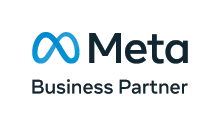Selling products and services across multiple countries through Meta’s platforms – Facebook, Instagram, and WhatsApp – continues to increase in popularity. Whether you’re in the real estate, travel, media, finance, automotive, or retail sectors, Meta enables businesses to expand their reach rapidly, and inform new customers about these products and services.
However, any international marketeer who has promoted an e-commerce site (not just in the retail sector) on Meta will know that achieving scale can be tougher than it seems, especially if they have to maintain Facebook pages, Instagram profiles, and ad campaigns in multiple languages.
What is an international catalogue?
A “traditional” Facebook catalogue feeds the main details of your inventory to an advertising platform, for a given country. For example, a footwear store could set up an Instagram Shop and regularly update Meta with the product names, prices, available sizes & colours, along with product images, of all available stock. If they sell their products in 11 different European countries, they would need to update and maintain 11 different “traditional” catalogues.
Businesses can alternatively feed information for their entire global inventory, in a unified way, via an international catalogue. The main advantage of using international catalogues is they allow for a truly dynamic experience, which automatically adjusts to the user characteristics. For example, a hotel chain could provide the price for an all-inclusive ski trip in euros for French customers but in dollars for people in the USA.
Advertising with international catalogues
Dynamic ads – now known as Meta Advantage+ catalogue ads – allow advertisers to go one step further. When someone visits their website and adds an item to their shopping cart, signals can be sent back to Meta, informing the platform that user has added an item to cart. This then allows the brand to deliver targeted ads specifically designed to prompt action, e.g. showing cart abandoners images of the products they were interested in.
Another great advantage of international catalogues is that they allow advertisers to create truly dynamic ads, which automatically adjusts to the user’s characteristics. For example, the same ad will display prices in euros, product names and descriptions in Italian, and a link to the Italian site when a user is based in Italy, but in yen with Japanese text and a link to the Japanese site when the user is based in Japan.
Multi-language catalogues even in one country

Advertisers selling into Brussels, for example, cannot always be certain about which language to communicate with individual users, as it would be impossible based on geo-fencing alone to know whether they are French-speaking residents, Flemish speakers from the surrounding towns, or Eurocrats not comfortable in either of those two languages. Using an international catalogue allows the ad to display in the language that the platform knows will fit each users’ particular preferences, improving the ad experience and, in turn, campaign performance.
Technical challenges with multi-currency, and multi-language catalogues
Building an international catalogue can be technically problematic for brands that have different shops for each country. A different Magento (Adobe Commerce) or Shopify shop for each country, for example, will generate multiple individual feeds. In such cases, the in-built integrations cannot be used as is, even with a feed aggregator, because the same product will have different IDs in each country, making it impossible for Meta or other advertising platforms to build a unified catalogue. In such cases, it is necessary to build an additional layer of code to pair products or services, based on their unique characteristic.
Other advertisers with slightly different inventory in different markets will also struggle to unify all their products under a single feed. In such cases, again, an additional layer of code will need to be added, to ensure that the supplementary feeds (for specific countries / languages) can always find the relevant product within the main feed.
Need help building your international catalogue?
About the Author
Jérôme is the International Director at AccuraCast. A multilingual digital marketing specialist, with a very strong background in data and finance, Jérôme has previously worked at Euromoney and Geosys, where he did number-crunching for NASA.











